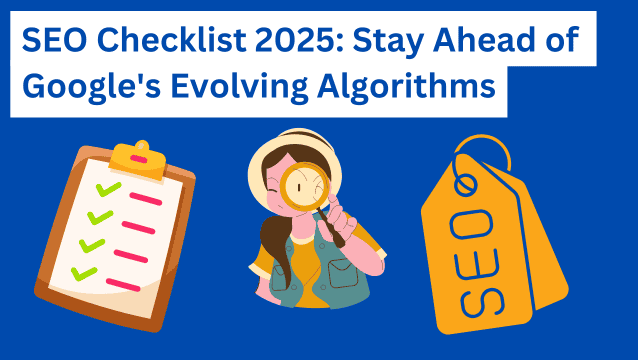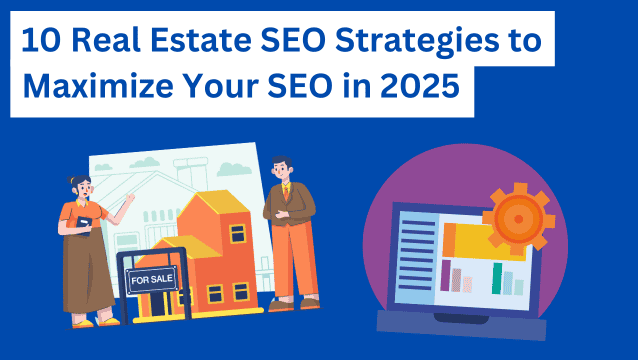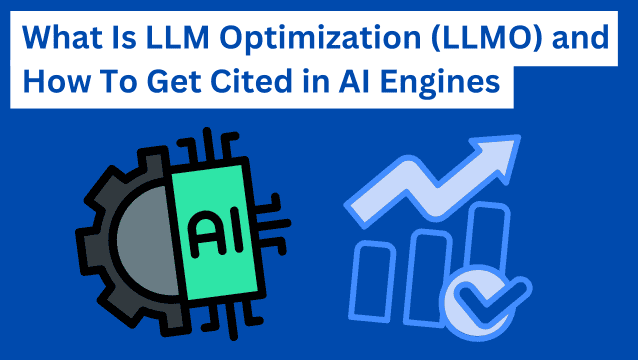If a business isn’t getting the traction it should, it’s no good just moaning about it. Tough times call for action. You should examine various crucial performance areas to understand what’s going wrong.
You can have the best product on the market, but if people don’t hear about it, your sales will wither, and your business will founder. The surest way of getting the word out about your product is by paying attention to your search engine optimization (SEO) and its performance.
We’ll look at some of the most important metrics you should use for your SEO efforts and performance. But we’ll start with a crucial question.
Why is SEO so important?
Search engine optimization is what makes your business visible. Without it, you’re shouting into a void.
The chart below shows that most users first encounter a website through organic search.
You can see right away that organic search has a much greater impact than paid ads. One of the reasons SEO analysis is so critical is that it can save you money.
The best way to influence organic search traffic is to ensure your SEO is tip-top and you adhere to applicable rules. These rules, which are set by search engines – mainly Google – govern how highly ranked your site will be by a search engine for SERP display.
You should consider conducting regular SEO audits to ensure your SEO performs at its best.
The rules can include the appearance of keywords and breaking up blocks of text into easier-to-digest smaller chunks to aid navigation.
However, your business performance can still be sluggish even if you think you’re applying all the SEO advice you know. This is where being able to measure the effectiveness of your online presence comes in. You need SEO analytics, and you need to be using the right metrics, and you need to be using the right metrics.
Overall traffic and keyword rankings are essential SEO KPIs. But with the rise of video marketing, TikTok KPIs such as tiktok followers, likes, shares, comments, and follower growth are now becoming increasingly important in measuring the success of your marketing campaign.
- Overall traffic
This is a good SEO tool starting point. If you’re looking at a brick-and-mortar store, you’d want to know how busy it is. You’d look at overall traffic. You want to know how many people come in daily rather than turning your immediate attention to revenue.
How do you get a figure on this? You can start by checking out Google Analytics. Among the report options is a traffic metric.
This metric will give you feedback on the types of traffic your site is currently attracting.
It’s an excellent holistic indicator of health. You’ll want to go more granular to get a finer focus on various areas. However, overall traffic shows you whether your SEO strategy is attracting interest, the first step towards making a sale.
- Keyword rankings
If traffic isn’t great, what might be the reasons behind it? One of the key influences on driving traffic is the effectiveness of the keywords you’re deploying. Why’s this? Because keywords play a huge role in determining whether your site gets prioritized by a search engine.
The average internet user doesn’t want to sift through several results pages to find your site. They’re going to want to see what they’re looking for immediately.
When it comes to search queries, a high proportion of users tend to click the first result they see. So, the further down the page you go, the less likely someone will click your result. That’s pretty obvious. But the steepness of the drop is staggering.
So, you need to use keywords that don’t just get you noticed by Google. You need to use keywords that leave Google with no choice but to propel you to the top of the SERP. How do you do this?
You can test the keywords you’re currently targeting yourself. For instance, maybe your site is all about the data and features of Apache Spark tools. You should start using a tool like Moz to check out the current popular search terms. Then enter into Google what you find there, such as ‘what is PySpark.’
Look at the results, and if your site is prominently positioned, then you’re doing OK. If your site languishes in the doldrums, you need to improve your keyword performance. The key is to align the content closely with what people are searching for.
Don’t rest on your laurels
This is a crucial point. It’s called organic traffic for a reason. It’s not just traffic without paid ads. It’s also organic because it changes and evolves. For this reason, just because you have the most happening keywords one week, it doesn’t mean they’ll stay that way.
You have to revisit your keywords regularly to sustain your organic search visibility. Trends and events have a great deal of influence over what keywords people are looking for. You need to develop fresh keyword ideas to move with the times. And vice versa, you can plan events on your own which will result in more buzz and will contribute to the development of fresh keywords.
Many SEO tools are available to help you with this task, from Google’s products like Google Analytics and Google Ads to other popular products like Semrush. You can use these tools, and many others, to analyze your website’s traffic and help you identify new and relevant keywords to target.
- Click-through rates
So, you’ve got some buzzing keywords propelling you to the top of the SERPs, but you’re seeing low traffic. What you have here is the equivalent of paying for a newspaper banner ad. However, worrying too much about placement means you’ve forgotten to make the ad wording enticing.
It’s right at the top of the page, and there’s simply no missing it. But the meta description that people see when they find you at the top of the SERP isn’t doing the job of encouraging the user to visit your site.
You can get a metric on your click-through rate (CTR) as follows. Go to your Google search console. Select your site, and click ‘search results’ then ‘average CTR.’ This should give you an insight into how often people who see your listing use it to click through to your site.
Great! You may think – I’m hoping for something in the 60–70% region. Woah there. Reality check time. It may come as a surprise, but a CTR of under 10% is very common, even on successful websites.
However, if you’re finding that the rate is drastically low, you may need to look at that meta description again and work on its powers of attraction.
Think about how you engender not just attraction but trust. Even better if you can work in some accreditation. It’s like when a customer sees a Databricks data engineering certification: it denotes quality. That’ll take some doing to fit into the character limit, but see what you can do.
- Bounce rate
So, you’ve got a large number of people becoming aware of your website, with a decent percentage of them landing on your website. Well done you. That’s that, surely.
Well, not if the people coming to your site decide it’s not what they were looking for. After seeing one page, they leave, sticking around for about as long as it takes a tennis ball to rebound off a brick wall.
Whether you worked in SEO related positions or are just familiar with how the online world works, you know this can’t be a good sign.
Although Google doesn’t use bounce rates as a ranking factor in SEO, it’s still an enormously important metric. It’ll determine how likely a customer is to buy something from you and, crucially, how likely they are to return.
If your bounce rate is distressingly high, you need to consider the user experience your site’s landing page delivers, as well as question whether your SEO efforts are well aligned with a user’s search intent.
Are users encouraged to take the steps you want them to? Have you broken up content with subheadings? Do you update your site with new content ideas? Is the CTA clear and compelling? Does your site look nice? Appearance is important in today’s digital world, and investing in UI/UX design services can ensure your website is visually appealing and intuitive to navigate, helping reduce bounce rates.
It’s important to note that Google Analytics 4 (GA4) refers to bounce rate inversely using the expression ‘engaged session.’ You can see from this screenshot that GA4 gives metrics on both engaged sessions and engagement rates.
The engagement rate figure tells you what percentage of your visitors have engaged with the site. The higher the engagement session figure, the lower the bounce rate.
UI/UX increases conversion rates by creating a user-friendly and visually appealing experience that guides visitors toward taking desired actions. By eliminating barriers and aligning the design with user needs and expectations, businesses can build trust and satisfaction, ultimately driving higher engagement and improved conversion rates.
- Site speed
Nobody likes a slow site. In fact, one study suggests that a site that loads in under one second delivers a conversion rate three times higher than one that loads in five seconds. That’s some effect.
It’s very much the case that slow-loading sites can struggle to appear on SERPs in the first place. To avoid this, it’s crucial to improve page loading speed. Then, when a customer does find them, they abandon them the moment they realize they’ve hit a slo-mo zone.
How can you check your site’s speed? Easily – you can visit your site’s front end like you were a customer. Alternatively, you can use an SEO analytics service like PageSpeed Insights. Enter your URL, and it’ll report back like so:
What can you do if you want an optimized website, but it’s a little sluggish? There are three options to try.
- Limit the number of images on your site. Pictures may look pretty, but they can slow things up a lot. So, cut out the cosmetics and use a pie chart maker to create images that inform, such as useful charts.
- Try a content delivery network that uses dedicated servers placed worldwide and routes users to the nearest one to their location.
- Finally, shop around for managed web hosting that promises faster speeds.
- Conversion rates
So, this is what it’s all about. Sure, having a busy shop full of customers bustling around and checking out the wares is great. But what makes a customer a customer is more than a willingness to turn up. It’s a readiness to buy. Your site’s primary job is to maximize this readiness.
So, it’s helpful to know what conversion rate your site is managing to achieve. It’s a very simple figure to arrive at:
CONVERSIONS/VISITORS = CONVERSION RATE
To improve the conversion rate, you need to see which parts of your site are doing their job and which need improvement. Your site has to take the user on a journey of engagement. By following the well-designed steps, they should become a solid conversion rather than a vague prospect.
You can check to see how well different parts of the site are securing engagement with Google Analytics. You can even set up a particular part of the site as an ‘event’ and track how many people interact with that event. For instance, you can have a ‘find out more’ CTA button defined as an event, and GA can tell you how well that’s working for you.
How can you improve conversion? Well, that’s the Holy Grail of selling. But you could give some tried and tested routes a go.
These include thinking carefully about user experience (UX) and testing things out exhaustively as if you were a customer. Are you swayed toward making a sale? Or are you put off at any point of the journey?
It sounds so simple. It’s not. But it’s vital that you go down this route if you want sales to succeed.
The best of the rest
Space prevents us from going into detail with these. But it’s well worth checking out the importance of customer lifetime value, good content, domain authority, social shares, and backlink building. Remember, when it comes to options for website improvement, there’s a whole universe of SEO analytics you can explore.
Closing the deal
Websites have a lot on their plate. Ok, brand identity and awareness campaigns do a lot of the heavy lifting that builds customer awareness before they consider interacting. But once a customer actively seeks a solution to their needs, websites have to step up.
They have to stand out and look enticing from a distance, look good up close, and propel a customer to the relationship’s goal – a sale. One slip at any point, and you have a missed opportunity. So, that means a lot to think about. But with key metrics for effective SEO analytics on your side, you’ll have the right tools for the job.


